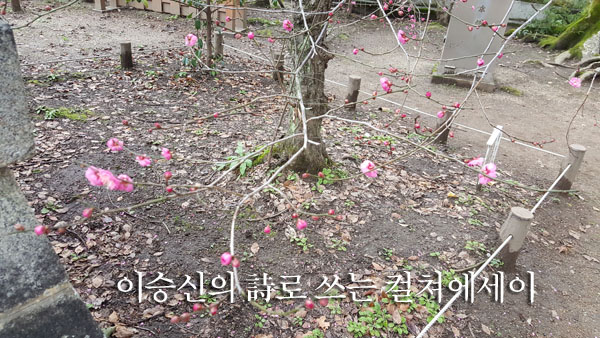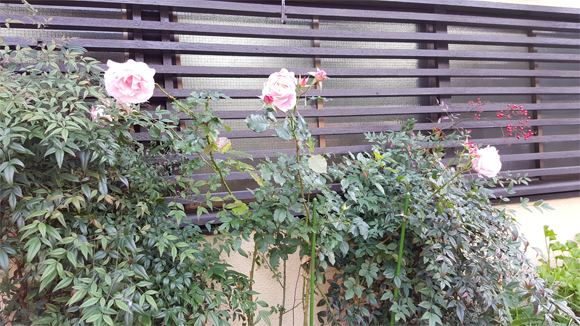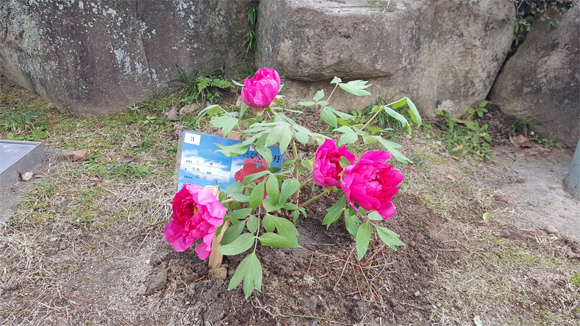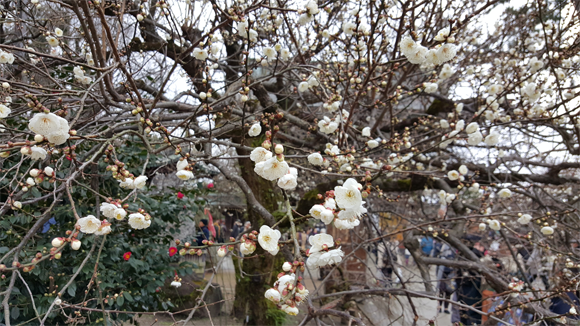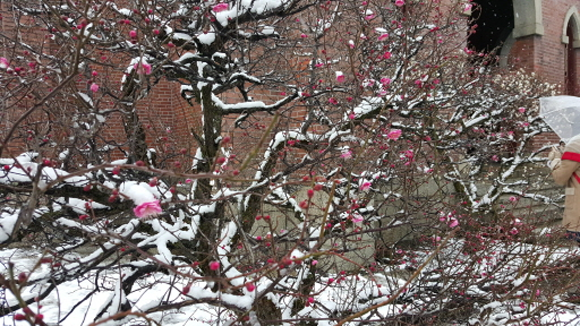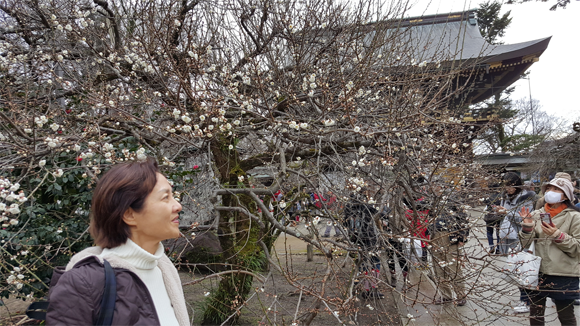Kyoto, Kitano Tenmangu January 2016
Flower News
Thanks to my father who was a government officer, since I was little, I always celebrated New Year's Day according to the solar calendar. It was also like that, of course, while I was living in the States. After I returned to Korea however, I have noticed that New Year's Day in the lunar calendar had become the central holiday before I knew it.
Being a part of the same Asia, Japan celebrates the solar calendar's New Year's Day. Obong, a similar holiday to our Chu-seok is on August 15 in the solar calendar.
The Japanese seasonal greeting for a new year is ‘Akemashite Omedetō gozaimasu 明けましておめでとうございます,’ which means ‘Congratulations for the new year.’ Besides this more common expression, they also say, ‘Hatsuharu no Oyorokobiwo Mōshiagemasu初春(はつはる)のお喜(よろこ)びを申(もう)しあげます,’ which means ‘I politely deliver the happiness of an early spring.’ It is a greeting of hope, wishing you to receive the force of the new spring, which has already come around the corner, although January is still in the middle of winter.
It is pretty chilly at night in December and January here, but the temperature goes up to around 12 degrees during the day and it is quite warm when the sun is out.
In early December last year, I stopped by the nearby Kitano Tenmangu Shrine 北野天満宮 colored in autumn tints and noticed there were so many plum trees (ume in Japanese) without a single leaf. Remembering that I saw the Ume festival on TV on February 25th every year, I asked a staff member of the shrine, 'Where is the Ume Festival going to be?' He answered me back that I was standing right at that location. I was happy that I could finally see the ume flowers at the end of this February.
In Kyoto, a cosmopolitan Buddhist city, classes are held even on Christmas Eve. On that day, my classical literature professor recommended me to check out the famous traditional market in Kita no Tenmangu Shrine on the next day, which does not have to do anything with Christmas at all. Respecting his recommendation, I paid a visit to the market without any expectation. Passing by various kinds of traditional Japanese food, I stepped into a garden to find a spectacular scene before my eyes. 'What is going on?'
The ume flowers, which are supposed to appear in early spring after a long piercing-cold winter, were all in full blossom. The old trees were dotted with red and white flowers. Every year, the first Ume Festival is held on February 25th at this shrine and is broadcasted live across the country, but they were already all in bloom two months ahead.
It is, they say, because of global warming. Indeed, I even saw some cherry blossoms somewhere. In 2020, it will allegedly be autumn in December in our country.
In January, four ume trees in front of the chapel at my university, Doshisha, also became in beautiful bloom. The symbol of Doshisha is Ume. The founder of the university, Niijima jō, who loved plum trees, is also well-known for his two-line poem.
Just like plum flowers that survived throughout the severe winter Also will the Truth bloom under harsh circumstances
Niijima Jō
On January 20 in Kyoto, big snowflakes were falling down only for a few hours in the morning. The white campus I visited in the snow also displayed beautiful scenery and the red plum flowers covered in snow looked utterly fantastic. I took one photo before my final exam, thinking I will take more proper shots after the final. After the 90-minute exam, however, I came out only to find that all of the snow had melted away under the sun. I was glad that I took at least that one shot with my cell phone while I was rushing to the exam. If it weren't for the picture to prove it, who would believe that the plum tree had bloomed in January, and on top of this, that it was covered in snow?
The snow in Kyoto on that day, scarcely coming once a year, decorated the first page of the following day's morning newspaper.
In Korea, people say that a fortunate thing will happen if it snows early. I would like to send my dear friend the news of early spring, that of red plum flowers covered in snow and other beautiful flowers rushing to bloom around here, wishing them a smooth start for a new year.
A flower bloomed only after enduring the severe cold Now I see the deep meaning of it
Lee Sunshine
light pink roses -Isejingu Jan. 3 2016
a garden of multi-colored magnolia - Kōbe, Hyōgo-ken Jan 2016
white plum flowers - Kitano Tenmangu, Kyoto Dec 25 2015
red plum floweres covered in snow - in front of Doshisha Chapel, Jan 20 2016 white plum flowers - Kitano Tenmangu Temple, Kyoto Feb 3, 2016
----------------------------------------------------------------
Lee Sunshine Poet, Essayist, Chief director of Son Hoyun Tanka Research Institute Dept of English Literature at Ewha Woman’s University Graduate School of Georgetown Univ, Washington D.C & of Syracuse Univ, New York Doshisha University Kyoto Japan Voice of America Wash.D. C Chief of the International Cooperation Committee at Korean Broadcasting Commission Senior adviser at Samsung Media & Cheil Worldwide
Publications A Journey of Healing and Awakening, Holding My Breath, Colored by Okinawa How Could Anything but Blooming Spring Exist in Life?, Because of Your Heart, a FlowerBlooms, etc.
|
